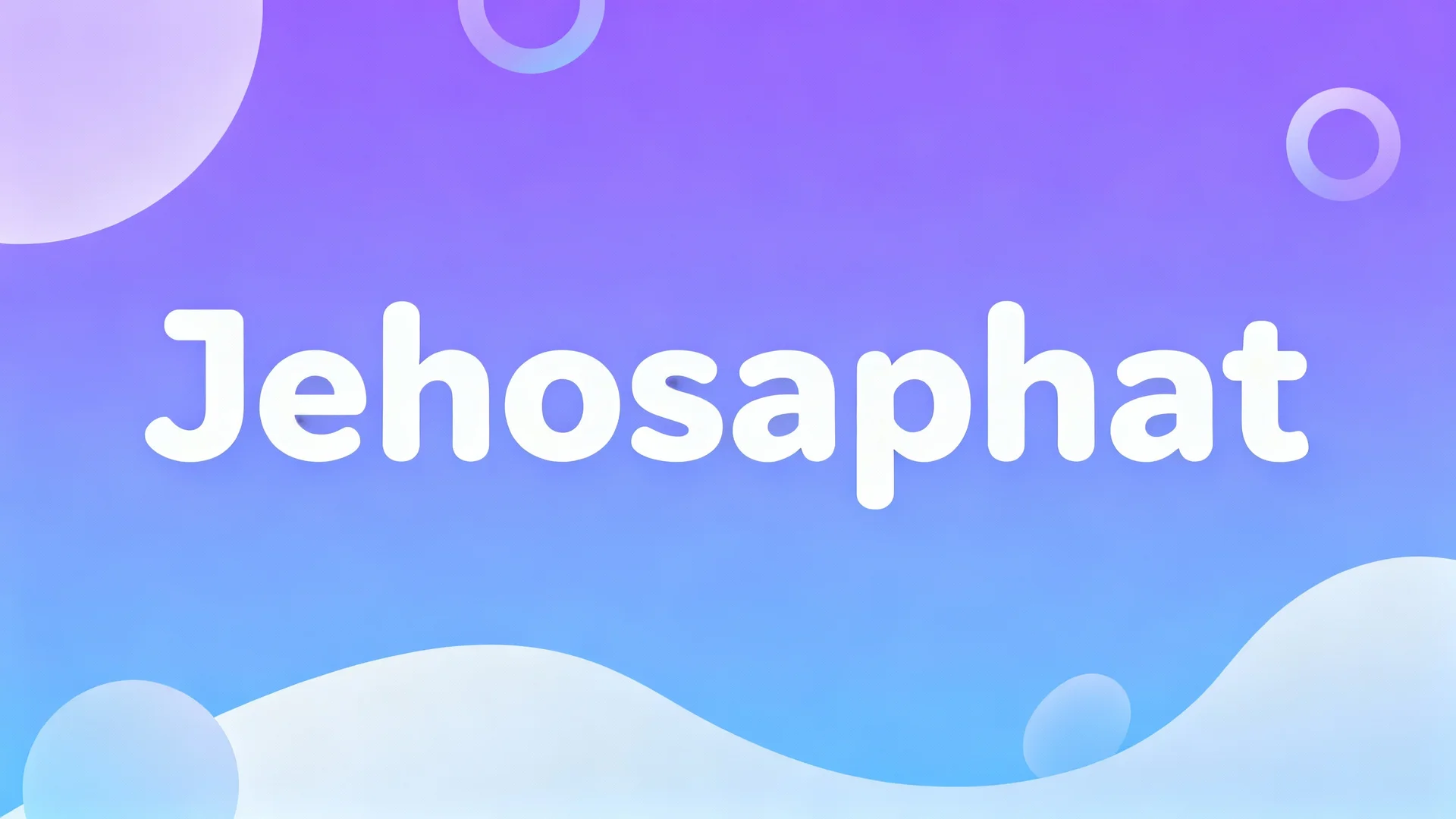
Loading...
Checking authentication...
Practice your pronunciation with interactive games and challenges.
Start PlayingOriginally, Jehosaphat was the name of a king in the Hebrew Bible-a leader celebrated for his piety and wisdom. In ancient texts, the name Jehosaphat connoted divine favor and righteous governance. As centuries passed, this venerable name became part of a broader cultural consciousness, inspiring not only religious narratives but also the vernacular expressions of emotion.
A surprising shift occurred during the Middle Ages when the name transitioned from its strictly religious connotations into a mild oath. Over time, exclamations such as “Jehosaphat!” emerged as a substitute for stronger language-a form of minced oath designed to avoid profanity while still conveying shock or surprise. This transformation illustrates how historical and cultural contexts can redefine a word’s usage, turning a sovereign’s name into a playful expression in everyday dialogues.
Throughout literary history, Jehosaphat has found its way into narratives that straddle the sacred and the secular. Writers often use the term to evoke a sense of antiquity or to imbue their characters with an air of old-world charm. For instance, in classic American literature, the exclamation “Jehosaphat!” might be used to express both astonishment and a subtle nod to cultural heritage.
This dual nature-both a biblical name and a colloquial outburst-offers writers a unique tool for blending high culture with everyday speech. Its use in literature also opens a window into how society reinterprets and repurposes language over time. By borrowing from historical lexicons, authors not only pay homage to tradition but also enrich their narratives with layers of meaning, inviting readers to explore the origins of words that might seem commonplace today.
Expert Insight: Renowned linguist Dr. Elaine Morrison notes,
“The transformation of words like Jehosaphat from sacred names to everyday exclamations underscores the dynamic evolution of language. It reflects the constant interplay between tradition, cultural adaptation, and the human need for expressive versatility.”
In modern times, Jehosaphat enjoys a curious dual life. On one side, it remains a reference to an ancient king whose story is etched in religious history. On the other, it has become an interjection imbued with humor and nostalgia. Today, its appearance in films, television shows, and even casual conversation marks it as a relic of linguistic creativity, highlighting how words can evolve and flourish in unpredictable ways.
Modern media has played a significant role in popularizing the term. Comedians and screenwriters often favor it for its old-fashioned quality, which delivers both comic relief and a touch of period flavor. This blend of historical gravity and contemporary wit invites audiences to appreciate the word’s layered background. Additionally, technology enthusiasts and language learners can dive deeper into its rich pronunciation details by exploring resources like our comprehensive pronunciation guide or watching the video tutorial on how to pronounce Jehosaphat.
For language learners and cultural aficionados alike, mastering the use of Jehosaphat involves not just understanding its pronunciation but also its deep-rooted history and cultural significance. Incorporating this word into your vocabulary can serve as a conversation starter and a window into historical linguistics. Picture yourself reading a classic novel or watching an old film where a character exclaims “Jehosaphat!”-now you appreciate the term’s evolution and cultural resonance.
Here are some scenarios to practice its usage:
Usage Tip: Try alternating your expressions by interjecting Jehosaphat with modern exclamations to see how its old-world charm can liven up everyday conversation.
As language continues to evolve, words like Jehosaphat serve as both a reminder of our cultural heritage and an example of linguistic ingenuity. They highlight how our shared histories shape the way we communicate and how even seemingly archaic terms can find new life in modern contexts. This fascinating interplay between past and present invites us to explore, learn, and share our linguistic heritage.
Reflect on your own linguistic journey-how do you feel when you use words that carry a storied past? Consider further diving into the nuances of such expressions by checking our detailed pronunciation guide or watching an engaging video tutorial on Jehosaphat. Let the exploration of language be an endless adventure bridging history, art, and your own personal narrative.